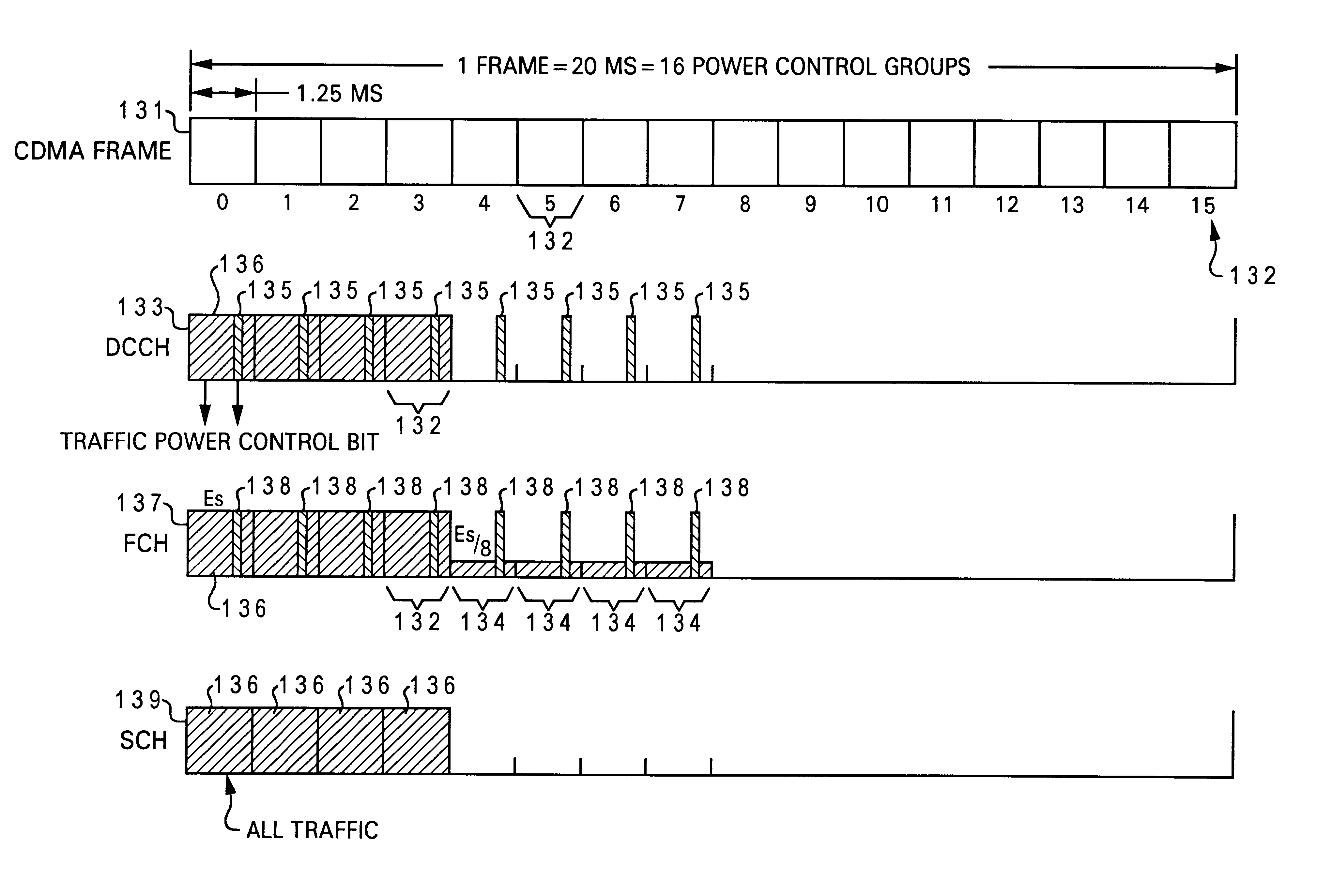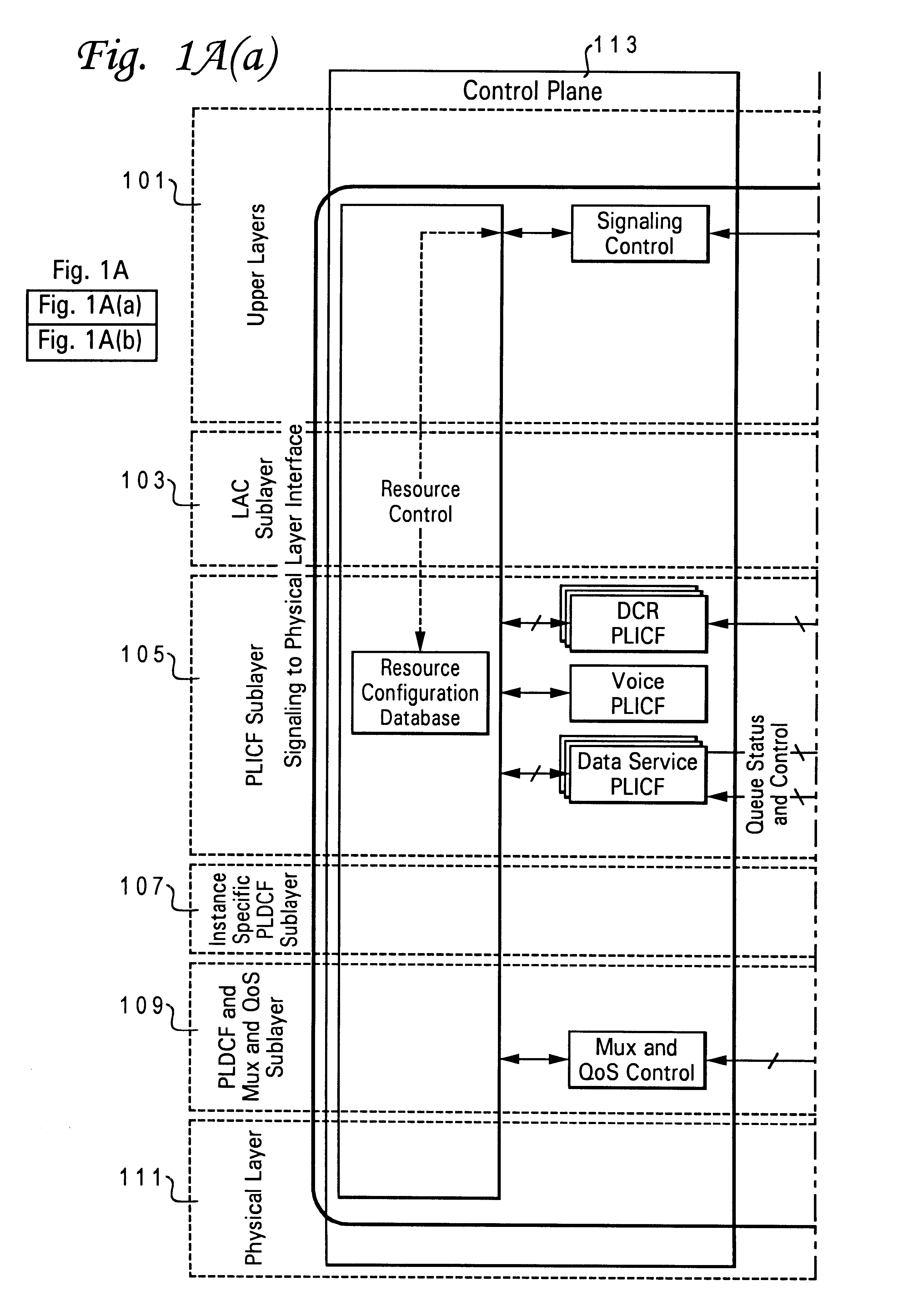Method and system for implementing outer loop power control in discontinuous transmission mode using explicit signalling
a technology of discontinuous transmission and power control, applied in the field of code division multiple access (cdma) systems, can solve the problems of reducing the potential gain achievable, complex process of world wide frequency allocation, and dtx transmission on dcch may often degrade the performance of outer loop power control
- Summary
- Abstract
- Description
- Claims
- Application Information
AI Technical Summary
Problems solved by technology
Method used
Image
Examples
Embodiment Construction
The present invention implements apower control method for use in transmission of packets on a DCCH and a SCH of a CDMA system in DTX mode. The invention is applicable to both the forward and reverse links. The invention solves the power control and call drop problems inherent in prior systems by letting the receiver (i.e., the base station or mobile station depending on whether transmission is in the reverse or forward link) know whether or not the transmitter has gated off the traffic channel on the DCCH or SCH. The invention provides a way to keep the forward or reverse target Eb / No from unnecessarily increasing during DTX mode. By implementing the invention, the system capacity will improve when the DCCH or SCH is used substantially. Two different power control methods / algorithms are described herein which are suitable for use in different transmission states. In one preferred embodiment, the invention provides a method to detect if DTX is on or off without the reliance on expli...
PUM
 Login to View More
Login to View More Abstract
Description
Claims
Application Information
 Login to View More
Login to View More - R&D
- Intellectual Property
- Life Sciences
- Materials
- Tech Scout
- Unparalleled Data Quality
- Higher Quality Content
- 60% Fewer Hallucinations
Browse by: Latest US Patents, China's latest patents, Technical Efficacy Thesaurus, Application Domain, Technology Topic, Popular Technical Reports.
© 2025 PatSnap. All rights reserved.Legal|Privacy policy|Modern Slavery Act Transparency Statement|Sitemap|About US| Contact US: help@patsnap.com



